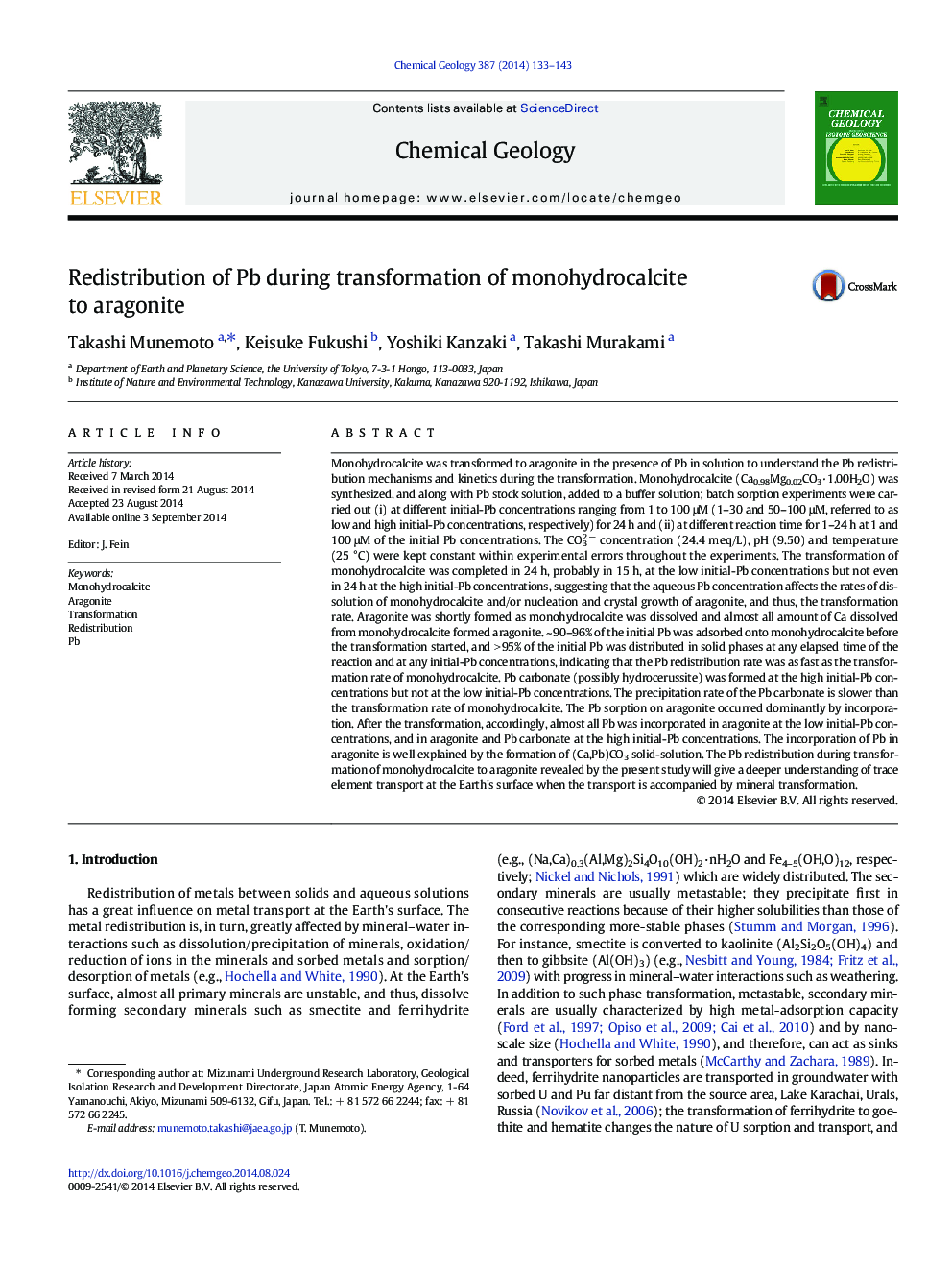| کد مقاله | کد نشریه | سال انتشار | مقاله انگلیسی | نسخه تمام متن |
|---|---|---|---|---|
| 6436577 | 1637585 | 2014 | 11 صفحه PDF | دانلود رایگان |

- Kinetic and isothermal Pb-sorption during transformation of monohydrocalcite was examined.
- Lead sorptions during the transformation are different between low and high Pb loadings.
- The Pb-sorption mechanisms are formation of (Ca,Pb)CO3 solid-solution and Pb-rich phase(s).
- Metal sorption behavior is different between with and without transformation.
Monohydrocalcite was transformed to aragonite in the presence of Pb in solution to understand the Pb redistribution mechanisms and kinetics during the transformation. Monohydrocalcite (Ca0.98Mg0.02CO3·1.00H2O) was synthesized, and along with Pb stock solution, added to a buffer solution; batch sorption experiments were carried out (i) at different initial-Pb concentrations ranging from 1 to 100 μM (1-30 and 50-100 μM, referred to as low and high initial-Pb concentrations, respectively) for 24 h and (ii) at different reaction time for 1-24 h at 1 and 100 μM of the initial Pb concentrations. The CO32 â concentration (24.4 meq/L), pH (9.50) and temperature (25 °C) were kept constant within experimental errors throughout the experiments. The transformation of monohydrocalcite was completed in 24 h, probably in 15 h, at the low initial-Pb concentrations but not even in 24 h at the high initial-Pb concentrations, suggesting that the aqueous Pb concentration affects the rates of dissolution of monohydrocalcite and/or nucleation and crystal growth of aragonite, and thus, the transformation rate. Aragonite was shortly formed as monohydrocalcite was dissolved and almost all amount of Ca dissolved from monohydrocalcite formed aragonite. ~ 90-96% of the initial Pb was adsorbed onto monohydrocalcite before the transformation started, and > 95% of the initial Pb was distributed in solid phases at any elapsed time of the reaction and at any initial-Pb concentrations, indicating that the Pb redistribution rate was as fast as the transformation rate of monohydrocalcite. Pb carbonate (possibly hydrocerussite) was formed at the high initial-Pb concentrations but not at the low initial-Pb concentrations. The precipitation rate of the Pb carbonate is slower than the transformation rate of monohydrocalcite. The Pb sorption on aragonite occurred dominantly by incorporation. After the transformation, accordingly, almost all Pb was incorporated in aragonite at the low initial-Pb concentrations, and in aragonite and Pb carbonate at the high initial-Pb concentrations. The incorporation of Pb in aragonite is well explained by the formation of (Ca,Pb)CO3 solid-solution. The Pb redistribution during transformation of monohydrocalcite to aragonite revealed by the present study will give a deeper understanding of trace element transport at the Earth's surface when the transport is accompanied by mineral transformation.
213
Journal: Chemical Geology - Volume 387, 10 November 2014, Pages 133-143